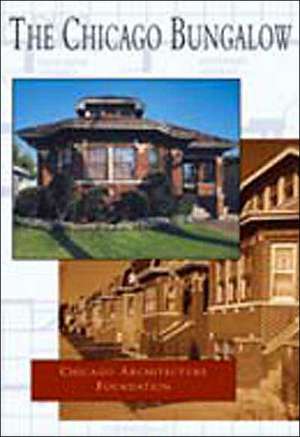The Chicago Bungalow: Illinois
Autor Architects of Chicago, Chicago Architecture Foundationen Limba Engleză Hardback – 28 feb 2003
After 1915, new neighborhoods appeared across the prairie. The Chicago-style bungalow came to both dominate and symbolize these areas. A one and one-half story single-family freestanding home, it included such conveniences as electricity, indoor plumbing, and central heat. Chicagoans built some 80,000 bungalows. Another 20,000 were built in suburban Cook County. Nearly every ethnic and racial group in the area has made its way at one time or another to the Bungalow Belt. Today the Bungalow Belt includes white ethnic, African American, Latino, and Asian families.
Preț: 138.55 lei
Nou
Puncte Express: 208
Preț estimativ în valută:
26.51€ • 27.65$ • 22.04£
26.51€ • 27.65$ • 22.04£
Carte indisponibilă temporar
Doresc să fiu notificat când acest titlu va fi disponibil:
Se trimite...
Preluare comenzi: 021 569.72.76
Specificații
ISBN-13: 9780738523125
ISBN-10: 0738523127
Pagini: 176
Dimensiuni: 186 x 234 x 12 mm
Greutate: 0.44 kg
Ediția:Reprint
Editura: Arcadia Publishing (SC)
Seria Illinois
ISBN-10: 0738523127
Pagini: 176
Dimensiuni: 186 x 234 x 12 mm
Greutate: 0.44 kg
Ediția:Reprint
Editura: Arcadia Publishing (SC)
Seria Illinois
Notă biografică
The City of Chicago launched the Historic Chicago Bungalow Initiative in September 2000. In partnership with the newly created Historic Chicago Bungalow Association, the Chicago Architecture Foundation, financial institutions, and the City of Chicago are taking the steps necessary to preserve bungalow communities. The Chicago Bungalow is a critical part of the city's housing infrastructure and an architectural treasure that has remained too little known and appreciated. It is hoped that this book and exhibition will help to focus attention on this long ignored treasure of Chicago's architectural legacy.








